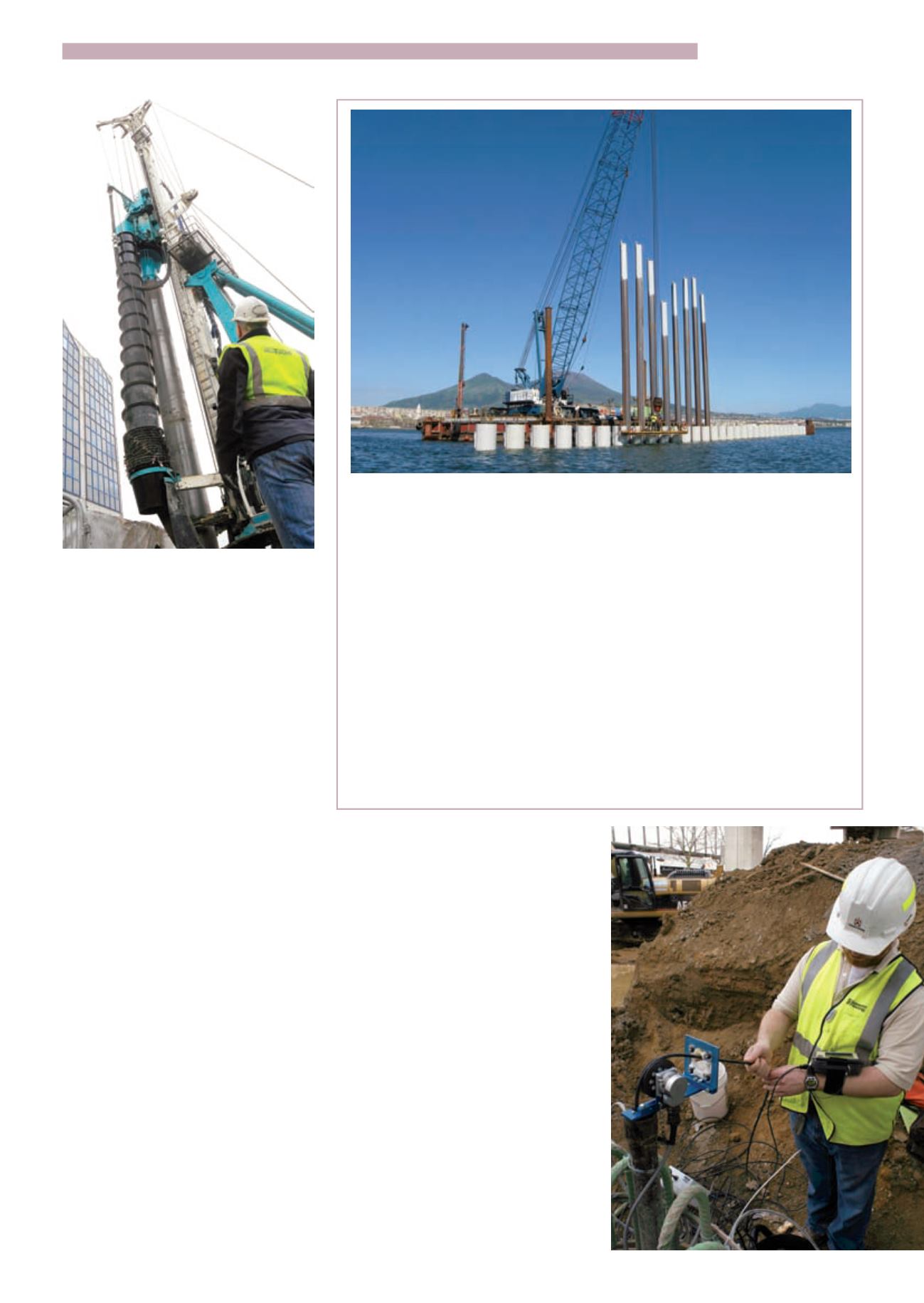
43
CONSTRUCTION EUROPE
SEPTEMBER 2013
FOUNDATIONS
geogrids, geotextiles or significant thicknesses
of capping.
Geofirma said its parent company Blackwell
previously had difficulties in achieving
consistently the required load bearing
capabilities in excess of 400kn/m
2
for the 70
tonne wind turbines, which will sit on top
of a concrete foundation piled to 30m deep.
But it reported that the use of Geofirma’s soil
stabilisation solution provided a significant
advantage in achieving this.
AHEAD OF SCHEDULE
In addition, by completing the earthworks
and soil stabilisation almost a week ahead
of the three-week deadline, Geofirma said
piling operations were able to start early – a
time saving that it hopes will allow the entire
project to be delivered early.
Concreting is also a key component of
any foundations project, and supplier
Hope Construction Materials has launched
a new range of ready-mixed concretes for
the sector using a combination of concrete
additive technology and a formulated blend
of aggregate.
The Hopeflow range is described as high-
performance, self-compacting concretes and
flowing screeds that can be placed in a fraction
of the time of conventional concrete. Hope
Construction also said the product provided a
high-quality surface finish that required little
or no further remedial work.
Hopeflow ready mixed concretes are said to
flow quickly and easily around formwork and
rebar, without the need for vibration, meaning
there is no hand-arm vibration felt by users
Foundations away from dry land
Offshore environments bring with them a whole new set of challenges as far as foundations
are concerned – Trevi, for instance, supported the Port Authority of Naples with the
construction of a new terminal and sediment tank at the eastern dock of the Port of Naples,
Italy.
The works included the insertion of sheet piling, bored piles, containment plastic
diaphragm walls and consolidations.
The depth of the eastern dock varies from 7 to 15m and the terminal will be built by
confining and filling the water surface of the dock with the sediments dredged from the
bottom of the port. For this purpose, the eastern dock must be completely waterproofed to
form a box, using steel sheet piling.
Further plastic diaphragm walls will also be used to confine the sediment tank in a
waterproof area, while the seabed must also be consolidated with jet-grouting technology
in certain places.
The dock must be dredged and contaminated sediments removed. Then piles will be bored
within the waterproofed areas, serving as a foundation for the upper superstructures on the
dock.
Miller Piling bought a 140 tonne
Casagrande Cased CFA piling rig – believed
to be the largest such machine in the UK –
to work on a number of contracts coming
on stream this year
The eastern dock of the
Port of Naples, where Trevi
is supporting construction
of a new terminal and
sediment tank
and less noise throughout the installation
process.
Karl Lawes, business development manager
at UK contractor Co-Dunkall, was one of the
first to use Hopeflow concretes. “You can
generally get a new build plot of 150m
2
poured and finished within three hours, giving
the customer the surface finish that they
require,” Mr Lawes said.
Contractor Miller Piling, meanwhile, claimed
cased continuous flight auger (CFA) piling was
another fast-growing sector of the foundation
industry.
This involves drilling to the required
depth with a continuous casing and hollow
stemmed flight auger, and then pumping
liquid concrete down the hollow stem while
the casing and auger is slowly withdrawn,
conveying the soil upward along the flights.
Reinforcement can then be lowered into the
column of liquid concrete.
Pile Dynamics said it has seen a
significant increase in the use of its
latest deep foundation testing system,
the Thermal Integrity Profiler
>


